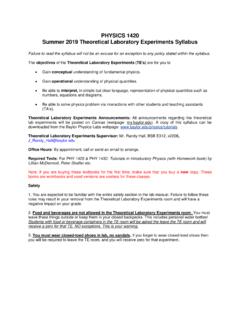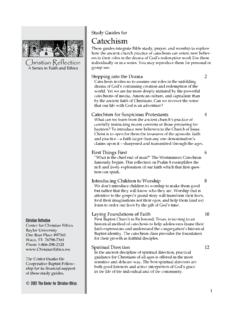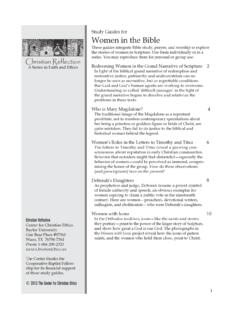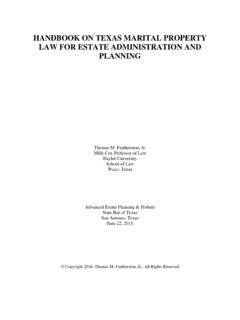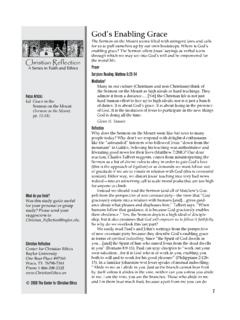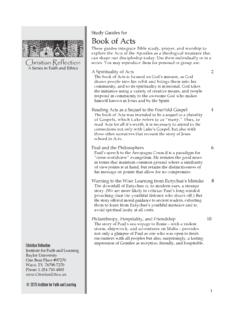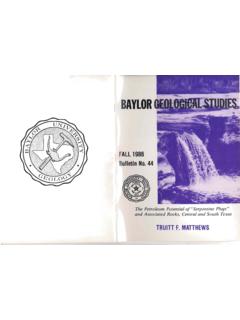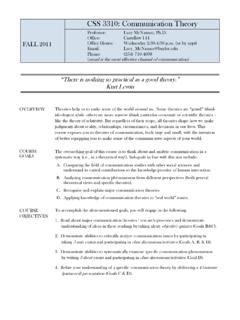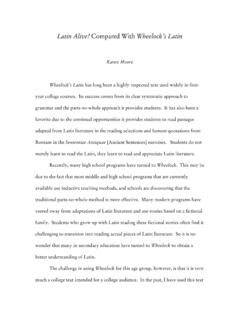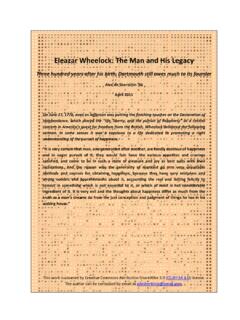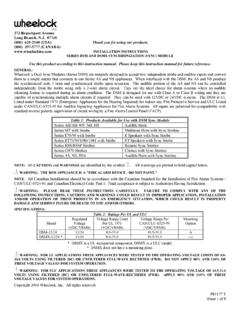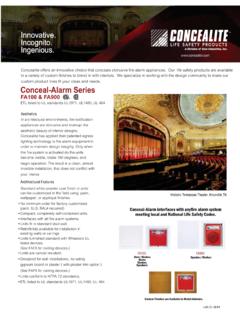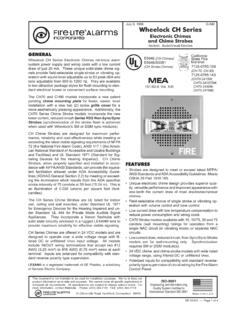Transcription of WHEELOCK SYNTAX 1-30 - baylor.edu
1 Latina Ursorum a guide to Latin at baylor University Version 2014 Julia D. Hejduk page ii Why Latina Ursorum? In Fall 2004, I found myself in front of an assortment of third-semester Latin students at baylor University, none of whom I had laid eyes on before. Although those who had taken the first two semesters at baylor had all used WHEELOCK s Latin, our introductory classes comprise hundreds of students and about a dozen faculty, with disparate teaching styles. Some of the students were fresh out of high school. All had very different ideas about what reading Latin actually involved. I believed I had a pretty clear idea of what reading Latin involved: to translate with complete accuracy and understanding, which means being able to identify the form and SYNTAX of every word in every sentence.
2 The key to accomplishing this feat lies in clarity of expectation and endless repetition ( , making them do it from week one and never letting up). But how could I convey exactly what I expected? And more challenging still how could I make it easier and even, occasionally, a little bit fun? Thus was born Latina Ursorum: A Guide to Latin at baylor University. Actually, that s not entirely true. During my three lustra of teaching at Harvard, the University of Texas at Arlington, and baylor , like most Latin teachers, I had amassed a great quantity of quizzes, tests, explanatory handouts, worksheets, mnemonic jingles, and other goodies. But I had never attempted to pull them together into a systematic overview of the whole language.
3 Part of my motivation, I confess, was to give legitimacy to some of the SYNTAX WHEELOCK neglects; I get tired of trying to convince my upper-level students that potential subjunctives and subject noun clauses are not figments of my imagination. The main goal, however, was to give motivated students a comprehensive outline of the grammar that textbooks necessarily dole out piecemeal. To make more palatable the bitter draught of syntactical rigor, as Lucretius and Julie Andrews have reminded us, a spoonful of sugar is a must. I had often counseled my students to make up silly songs or rhymes to help them memorize things be honest, don t you hear the Alphabet Song sometimes when you open a dictionary?
4 But I had never gone out of my way to do the composing for them. Yet once the idea of rendering Latin morphology and SYNTAX in song was hatched, it became a Quest. Insomnia is an amazing thing. My fevered brain could not rest until it had fitted third-declension endings to Row, Row, Row Your Boat, past contrafactual conditionals to On Top of Old Smokey (= On Top of Spaghetti ). If I leave behind no other monument, I can hope that choruses of Hic Haec Hoc to the tune of Jingle Bells will be sung throughout the ages in barbarian lands. So did it work? The answer is, I think, a resounding sort of. Students who are not used to having to identify forms bristle when expected to do so.
5 Sometimes the hardest part is simply getting them to use the thing. (This is a problem, alas, with textbooks, too; despite repeated prompting, many will never even find, let alone use, the Optional Exercises with Answers in WHEELOCK .) Some just don t like to sing (though most will smile, if only in derision, when I do). But all of them, if nothing else, now know what identify means, what the range of possibilities is, and where to turn for a quick fix on a mystifying concept. Perhaps the students of the future will put that knowledge to even better use. One of the nicest things about teaching is that every year brings new hope. page iii OVERVIEW of Latina Ursorum: A Guide to Latin at baylor University Version (8/14) DON T PANIC!
6 LU was developed as a supplement to Latin courses at baylor University based on WHEELOCK s Latin, but it can serve the needs of students at all levels, including those who are using a different textbook or reading unabridged Latin. Different parts will be more relevant at different stages. For instance, some of the Mnemonics, especially Declension Ditties and Anthology of Jingles, will be useful as early as the first week. Latin SYNTAX , which gives an outline of perhaps 95% of Latin grammar (including some not found in WHEELOCK ), will be more useful to those who are marching through the latter chapters of their textbook or tackling real Cicero. The Sample Quizzes and Tests (with answers) should be helpful to all.
7 Supporting Materials, such as The Subjunctive Translated and Synopses, give a synthetic overview of verb forms and grammar, as well as some handy lists and Examples and Exercises for key grammatical concepts. One caveat: despite its handsome and authoritative appearance, LU is not a textbook. The Latin SYNTAX section is intended as a review and quick reference, giving a few examples of each grammatical construction and fleshing out some that students will encounter when they read unabridged Latin ( , Independent Subjunctives, Noun Clauses, Relative Clauses with the Subjunctive ). The occasional notes are meant merely as a supplement to the explanations in WHEELOCK .
8 Learning Latin is, fundamentally, simple. Every word in a Latin sentence has two basic characteristics: a) form (what the word is) and b) SYNTAX (how it functions in the sentence). The first step is to learn HOW TO IDENTIFY FORMS, which is thus the first page of LU (and contains the abbreviations used throughout). The next step is to acquire, gradually, ever-increasing knowledge of specific forms and SYNTAX . WHEELOCK is structured so that one learns about 80% of the forms and 10% of the SYNTAX in the first half of the course (at baylor , this means chapters 1-22; see WHEELOCK 1-22: SYNTAX List ), with the remaining 20% of the forms and 90% of the SYNTAX in the second half.
9 Simple, alas, does not equal easy. Learning Latin involves a great deal of memorization and the kind of intellectual precision one might expect from a math course: just about every letter in a Latin word counts. If you can master the material outlined in LU, however, you should be qualified to read any Latin text (with a dictionary), teach Latin at any pre-collegiate level, and enter any Latin graduate program. Other than a few minor corrections, Version differs from Version through the addition of hyperlinks to the songs. page iv As ever, Latina Ursorum remains a work in progress. I would be extremely grateful if you would email me any typos, errors, or suggestions for improvement, no matter how trivial.
10 To my own students, I give an extra credit point for each typo they find: let others negotiate their own terms! Julia D. Hejduk Professor of Classics Director, baylor University Latin Program page v CONTENTS I. Latin: How to Identify Forms 1 II. Latin SYNTAX 2 Uses of Noun Cases 3 Ablative 3 of means 3 of time within which 3 of time when 3 of personal agent 3 of manner 4 of separation 4 of degree of difference 4 of comparison 4 of place from which 4 of accompaniment 4 of price 4 of cause 5 of specification 5 of description 5 object of preposition 5 of place where 5 with special adjective 6 with PPUFFV verb 6 Genitive 6 of possession 6 of the whole (= partitive)
